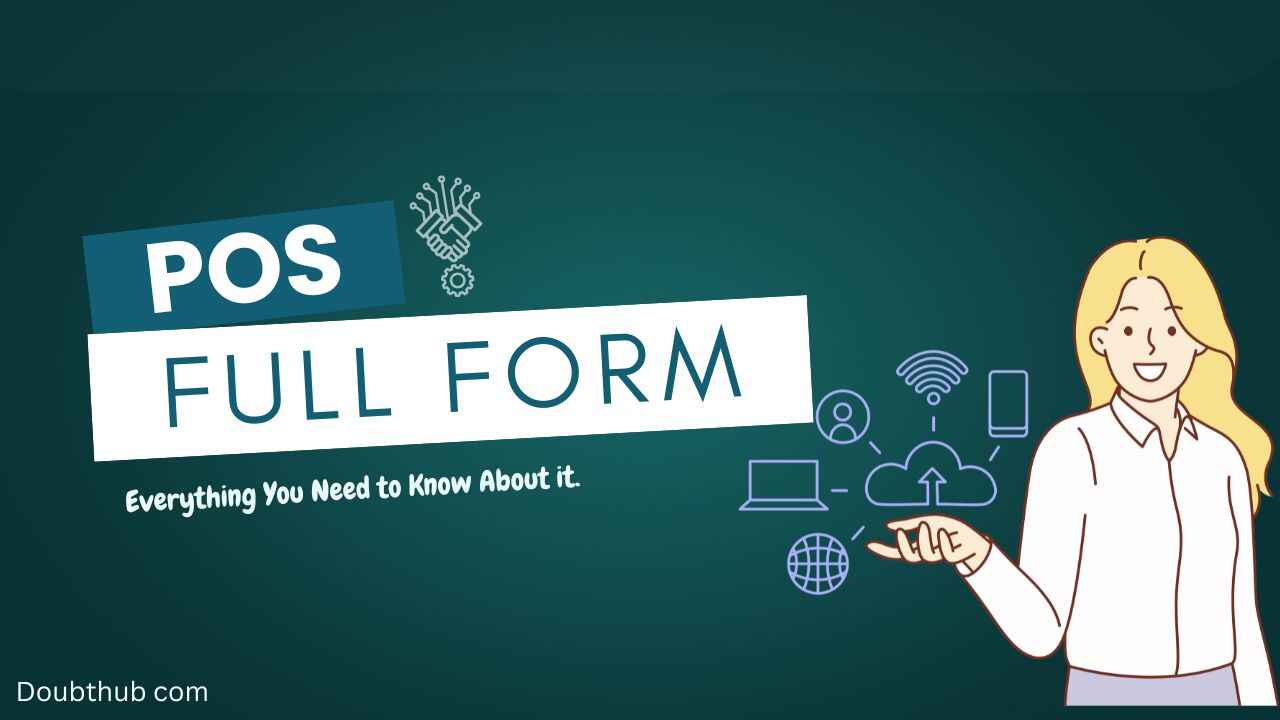If you have ever paid by card in a mall, grocery store, or restaurant, then you have used the POS system! In today’s digital era, POS is not just a machine, but has become a smart business tool. Let’s understand the full form of POS, its work, benefits, and future in this guide.
Table of Contents
What is the full form of POS?
- Point of Sale
The full form of POS is “Point of Sale“. This is a system that manages transactions between customers and businesses. When you buy any goods or service and make payment, that is the Point of Sale.
Earlier people used to make only cash payments, but now POS machines and software have made transactions digital and easy.
What is POS and how does it work?
In simple words, POS is a computerized billing system that records transactions. Whenever a customer makes a payment, the POS system:
- Scans the item or manually enters the price.
- Processes the payment (cash, card, UPI, digital wallet).
- Generates an invoice or receipt.
- Stock and sales records are updated.
- Today’s advanced POS systems also offer smart features like inventory tracking, customer data management, and analytics.
Know complete information about BCA that absolutely free
Why is POS System Important for Business?
If you are running a business, a POS system is a must-have tool. It is not just a payment machine, but also helps in making business operations smooth.
Some Major Benefits of POS
- Fast Transactions – Customers get quick service.
- Accurate Billing – Pricing and discounts are automatically applied.
- Inventory Management – POS tracks your stock levels.
- Sales Reports & Insights – Helps in business growth analysis.
- Multiple Payment Options – Cash, Card, UPI, QR Code are all supported.
How many types of POS Systems?
POS comes in different types according to different industries and business needs:
- Traditional POS – This is a hardware-based system that is installed at billing counters. Common in supermarkets, malls, and restaurants. Barcode scanner, receipt printer, and card payment integration.
- Cloud-Based POS – Stores data online, which can be accessed from any device. Best for small businesses and startups.
- Updates and data backup happen automatically.
- Mobile POS (mPOS) – This is a portable system that works on smartphones or tablets. Ideal for street vendors, delivery services, and food trucks. Supports contactless payments and QR scanning.
- Self-Service POS – This allows customers to check out themselves. Seen in shopping malls and fast-food chains such as McDonald’s. Reduces customer queues.
How does POS work?
There are 3 main steps to a POS system working:
1 Step : Customer Order and Billing
- The seller scans the barcode of the product or manually enters the price.
- The POS system calculates the price and applies discounts.
2 Step : Payment Processing
- The customer pays by cash, card, UPI, or digital wallet.
- The POS machine swipes the card or scans the QR code.
3 Step: Receipt Generation and Inventory Update
- After the payment is made, a bill is printed or a digital invoice is received.
- The system updates the inventory so that stock management is easy.
How to Install a POS System?
If you want to install a POS system for your business, then this is a simple process:
- Understand the business need – Do you want a traditional POS or cloud-based?
- Choose the right POS software – Popular options like Shopify, Square, Paytm POS are available.
- Set up the hardware – If you want a physical machine, then set up a scanner, printer, and touchscreen POS.
- Do software integrations – Look for GST billing, inventory tracking and CRM integration.
- Provide training – teach employees how to use the system.
POS (Point of Sale) challenges and solutions
Just like every technology has some challenges, POS systems also face some issues:
Common Problems & Solutions
- Slow Transaction Speed – use POS with good internet connectivity and high-speed processors.
- Fear of data loss – use cloud-based POS that provides automatic backup.
- Security risks – prefer systems with encryption and PCI compliance.
- Maintenance cost can be high – choose subscription-based POS software that is affordable and scalable.
The Future of POS system – Trends and Innovations
Powered POS – AI will be used for smart recommendations and fraud detection.
Voice-Activated POS – Assistants like Siri or Alexa will integrate into the POS system.
Biometric Payments – Payment will be possible through fingerprint and facial recognition.
Completely Cashless Systems – In the future, only digital and crypto payments will happen.
Integration with Other Systems – POS systems will integrate with other business systems, such as CRM
Conclusion of POS Full form
If you are a business owner, a POS system is a powerful tool that not only handles transactions but also improves sales, inventory, and customer experience. If you want to choose the best POS system for your business, take a decision according to your needs and budget.
Some Interesting FAQ about POS Full form
What is POS full form in banking?
It refers to the place where a transaction occurs using a debit or credit card, typically at a merchant’s payment terminal.
What is the full form of POS job?
A retail or cashier job that involves handling sales transactions at a checkout counter.
What is a POS transaction?
A purchase or payment made using a debit/credit card at a merchant’s POS terminal.
What is POS on ATM?
It refers to using an ATM as a POS terminal, allowing customers to make purchases or payments directly from their bank accounts.
What is the full form of POS department?
A team handling POS systems, payment processing, and transaction management.
In this article, we explored the full form of POS and its significance in various contexts. Understanding such abbreviations not only enhances our knowledge but also helps in better communication. If you found this information helpful, feel free to explore more full forms on DoubtHub.com and expand your understanding. Stay informed, and keep learning with us!


Your words act as a bridge, connecting the reader to a greater understanding of the world and themselves.
Thanks